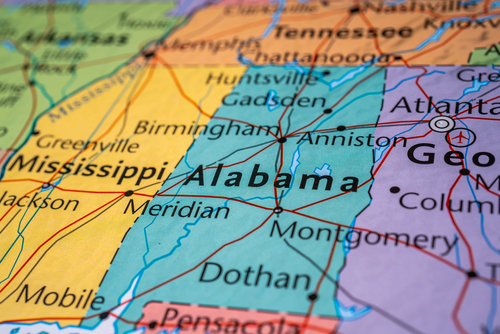Expect another wave of significant rulings as the Supreme Court returns
U.S. Supreme Court
Sometimes an especially momentous U.S. Supreme Court term is followed by a quieter year with fewer blockbuster decisions. But that is not what we should expect when the court hands down its rulings for this term in spring 2023. Once more, the court’s docket is filled with cases of great legal and social importance that will profoundly affect the lives of many people.
Although they fiercely disagree over the desirability of the court’s direction, liberals and conservatives share the sense that the 2016 presidential election was pivotal and will determine the court’s agenda and rulings for many years to come. If Hillary Clinton had been elected president in 2016 and had chosen three justices for the court, it would be very different.
The impact of the three picks of President Donald Trump—Neil Gorsuch, Brett Kavanaugh and Amy Coney Barrett—was apparent last term in the decisions overruling Roe v. Wade, expanding gun rights, limiting the power of administrative agencies and rejecting concerns over the establishment clause while expanding the protections of free exercise of religion. Except for the decision to overrule Roe , which was 5-4 (Chief Justice John Roberts did not join in voting to overrule Roe), each of these was a 6-3 decision, with the three liberal justices in dissent.
What should we expect in the first half of the new year as the court decides the cases from the October 2022 term?
Affirmative action
Conservatives have long opposed affirmative action, and it is expected that in 2023 the court will overrule prior decisions and greatly limit or even end the ability of colleges and universities to consider race as a factor in admissions decisions. Since 1978, when the court decided Regents of the University of California v. Bakke, the law has been that colleges and universities have a compelling interest in having a diverse student body and may use race as one factor among many in admissions decisions.
But on Oct. 31, 2022, the court heard over five and a half hours of oral arguments in two cases—Students for Fair Admissions v. University of North Carolina and Students for Fair Admissions v. Harvard College—as to whether to overrule the precedents that have upheld affirmative action in higher education. There was a widespread sense after the oral arguments that this will be the likely result.
A great deal will depend on how the court writes the opinions. Will they leave room for race-conscious admissions policies to achieve diversity? Will they simply reject that diversity is a compelling interest, or will they more broadly proclaim that the Constitution and Title VI of the 1964 Civil Rights Act require colorblindness? Will they indicate how to deal with programs that are facially race-neutral but have the purpose and effect of enhancing diversity, such as state schools that admit the top 10% of all high schools as a way to achieve diversity?
Assuming the court ends affirmative action, 2023 will be a year when colleges and universities will face the difficult question of how to achieve diversity without being able to consider race as a factor in admissions.
Elections
Two important cases about elections were heard in fall 2022. Moore v. Harper, which was argued on Dec. 7, concerns the so-called “independent state legislature” theory, which posits that the legislature of a state gets the final word on how elections to Congress are conducted and state courts are powerless to do anything even if the legislature is violating the law.
Moore v. Harper arises from partisan gerrymandering for congressional districts in North Carolina. After the 2020 census, North Carolina, like all states, redrew election districts. The Republican-controlled legislature drew the districts so that Republicans would be very likely to win 10 of 14 congressional seats. The North Carolina Supreme Court found that this gerrymandering violated the North Carolina constitution and appointed a commission to redraw the districts in a nonpartisan way. In the November election, Democrats and Republicans each won seven congressional seats, reflecting the almost even political split in the state.
But the North Carolina legislature and its supporters went to the U.S. Supreme Court to contend that the North Carolina Supreme Court has no legal authority to be involved even to enforce the state constitution because the state legislature gets the final, unreviewable word. They base this argument on a provision of Article I, Section 4 of the Constitution, which says that the legislature of each state shall determine the time, place and manner for choosing its members in Congress.
If the Supreme Court were to accept the independent state legislature theory, then no court could invalidate partisan gerrymandering, however extreme. It also would mean that states such as California no longer could have independent commissions to draw election districts for congressional seats. The court upheld these commissions in 2015 in Arizona State Legislature v. Arizona Independent Redistricting Commission and rejected the independent state legislature theory. But the majority in that 5-4 decision included now-retired Justice Anthony Kennedy and the late Justice Ruth Bader Ginsburg.
At the oral argument the most conservative justices—Clarence Thomas, Samuel Alito and Gorsuch—expressed support for it. It was unclear from the arguments whether Chief Justice Roberts and Justices Kavanaugh and Barrett are likely to join them. Roberts suggested looking for a compromise where the state court could invalidate districting, but then do no more than send the matter back to the legislature to draw new districts.
In Merrill v. Milligan, which was argued on Oct. 4, the court will consider when the drawing of election districts violates Section 2 of the Voting Rights Act of 1965, which prohibits state and local governments from having election practices that discriminate against voters of color. After the 2020 census, the Alabama legislature drew election districts for congressional seats so that there would be one majority Black district. A three-judge federal district court found that this violated the Voting Rights Act because Black individuals comprise 27% of the population of the state but make up a majority in only one of seven congressional districts.
The Supreme Court already has significantly narrowed the Voting Rights Act. In Shelby County v. Holder (2013), the court declared unconstitutional the provisions requiring that jurisdictions with a history of race discrimination in voting obtain preapproval before significant changes in their election systems. In Brnovich v. Democratic National Committee (2021), the court made it much more difficult to prove that state regulations of elections, such as restrictions on absentee ballots, violate Section 2 of the Voting Rights Act. The underlying question in Merrill v. Milligan is whether the court will make it harder to show that districting violates that provision.
Freedom of speech and discrimination
One of the most high-profile cases of the term is 303 Creative v. Elenis, which was argued Dec. 5. Lorie Smith, a graphic artist and a web designer, wants to design websites for weddings but refuses to do so for same-sex weddings because of her religious beliefs. Colorado law prohibits businesses that sell or offer services “to the public” from discriminating based on “disability, race, creed, color, sex, sexual orientation, marital status, national origin or ancestry.”
Smith filed a lawsuit in federal district court to have the law declared unconstitutional as applied to her and for an injunction to keep it from being enforced against her. The federal district court and the U.S. Court of Appeals for the 10th Circuit rejected these claims and stressed that the government has a compelling interest in preventing discrimination based on sexual orientation.
The Supreme Court granted review, but interestingly, only on the free speech issue presented and not on the question concerning free exercise of religion. Smith argues that the Colorado law impermissibly compels her speech by requiring that she design websites for same-sex couples. But the state of Colorado argues that the state is regulating conduct—prohibiting discriminatory conduct—and only incidentally Smith’s speech. The underlying issue—whether the First Amendment provides a basis for exemptions from anti-discrimination laws— is of enormous importance.
Presidential and agency power
The court has granted expedited review of cases concerning executive power under federal statutes and the ability of state governments to challenge presidential actions. In Biden v. Nebraska and Department of Education v. Brown, scheduled for oral argument Feb. 28, the court will consider whether state governments and student loan borrowers have standing to challenge President Biden’s student-loan relief plan. The cases also ask the court to decide whether the Biden plan is authorized by federal statutes and whether it was adopted in a procedurally proper manner.
In Arizona v. Mayorkas, the court will consider a controversial issue of immigration law. The Trump administration, early in the COVID-19 pandemic, invoked Title 42 of the Public Health Services Act to suspend entry of migrants at the Mexican and Canadian borders, even if they otherwise would be eligible to apply for asylum or other forms of humanitarian relief. In April 2022, the Biden administration announced that it would end this, but was enjoined by a federal district court judge in Louisiana and the appeal is now pending in the 5th Circuit.
Meanwhile, a federal district court judge in Washington, D.C. enjoined the policy. The D.C. Circuit in December denied the ability of 18 states to intervene. On Dec. 27, the Supreme Court, 5-4, stayed the district court’s order and said it would hear the case in the February argument session.
In conclusion
Recent experiences should make anyone cautious about making predictions at the start of a new year. Undoubtedly, issues will arise that cannot be foreseen now. But it is safe to say that it is going to be another momentous year in the Supreme Court.
Erwin Chemerinsky is dean of the University of California at Berkeley School of Law and author of the newly published book A Momentous Year in the Supreme Court. He is an expert in constitutional law, federal practice, civil rights and civil liberties, and appellate litigation. He’s also the author of The Case Against the Supreme Court; The Religion Clauses: The Case for Separating Church and State, written with Howard Gillman; and Presumed Guilty: How the Supreme Court Empowered the Police and Subverted Civil Rights.
This column reflects the opinions of the author and not necessarily the views of the ABA Journal—or the American Bar Association.






